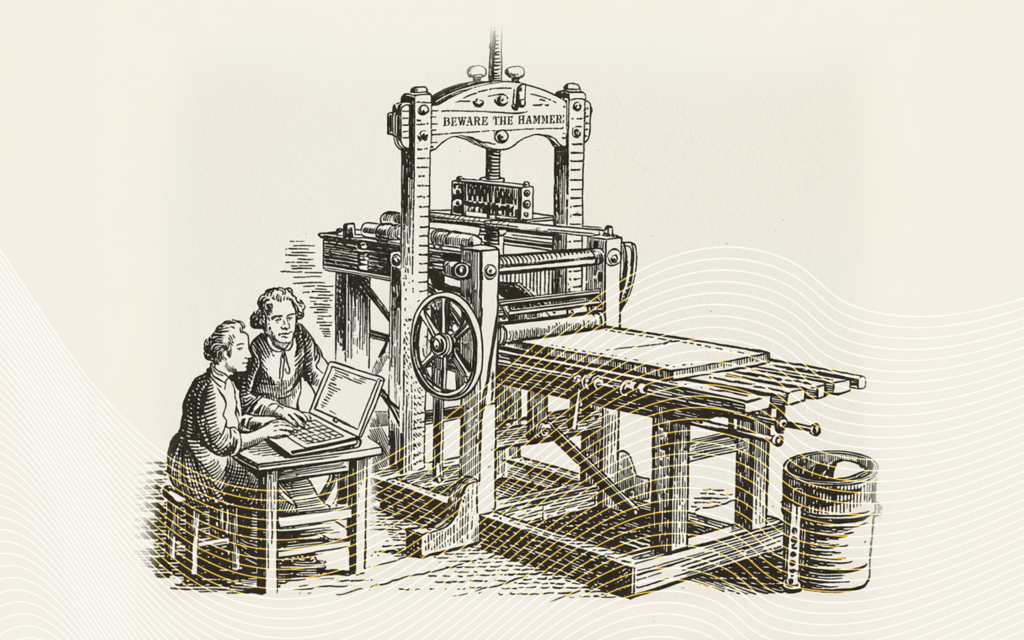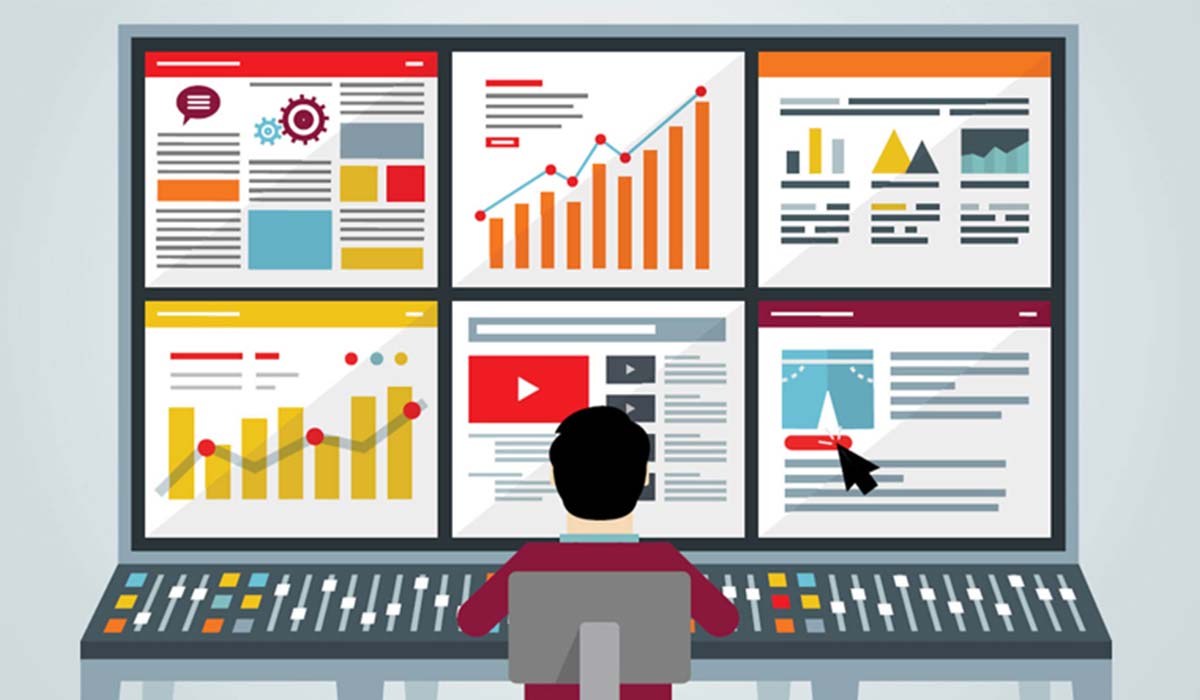
The Power of
Programmatic: Buying Smarter and More Effectively for Your Clients
This year, US advertisers will spend nearly $60 billion on programmatic display. By 2021, &Barr estimates almost 88%, or $81 billion, of all US digital display dollars will transact programmatically. (Source: eMarketer)
But first, let’s start with the basics.
WHAT IS PROGRAMMATIC MEDIA BUYING?
Programmatic advertising is an automated, technology-driven method of buying, selling or fulfilling digital display ad placements. (Source: eMarketer)
WHERE DO MY PROGRAMMATIC DISPLAY ADS RUN?
Programmatic ads run where your target audience goes online. That could be anywhere from global sites like NewYorkTimes.com to local blogs. With such a broad range, &Barr always recommends implementing a blacklist to avoid your ads being shown on sites that may contain questionable content. But otherwise, your ads can appear on virtually any website, or approximately 99% of the World Wide Web.
PROGRAMMATIC VS. SITE DIRECT MEDIA BUYING
There are many benefits to buying programmatically vs. site direct. Buying site direct involves going directly to a publisher (e.g., NewYorkTimes.com, Forbes.com, Food&Wine.com, etc.) and purchasing ads on their site. While you will have guaranteed visibility on that particular site, you will be capturing everyone who lands on that site, or page(s), whether or not they’re part of your target audience. Not to mention that rates for buying site direct tend to be much higher than programmatic, which is why &Barr buys the majority of its digital media programmatically for its targeting capabilities and efficiencies. In fact, &Barr was able to increase one client’s website visits by 400% and arrivals to their destination by 23%.
WHAT KIND OF ADS CAN I BUY PROGRAMMATICALLY?
You can buy almost any type of digital ad programmatically – from standard display banners to pre-roll and outstream video, connected TV and native ads. Paid social ads also run programmatically through each platform’s proprietary algorithm.
WHAT KINDS OF TARGETING CAN I APPLY TO MY PROGRAMMATIC BUY?
Programmatic buying can involve many types of targeting based on campaign goals and tactics. Some include demo targeting (e.g., age, gender, HHI, etc.), behavioral and interest targeting (e.g., fine dining, home décor, childcare), targeting based on credit card history, 1-to-1 targeting through list activation (CRM ingestion) and lookalike targeting.
HOW DO I BUY ADS PROGRAMMATICALLY?
Programmatic ads can be bought directly through a self-service DSP (Demand Side Platform) or through a 3rd party vendor that will determine which data sets and audiences to bid on against your media.
WHERE IS PROGRAMMATIC BUYING HEADED IN THE FUTURE?
While momentum has plateaued slightly in terms of spend, programmatic buying continues to grow year over year (see below).
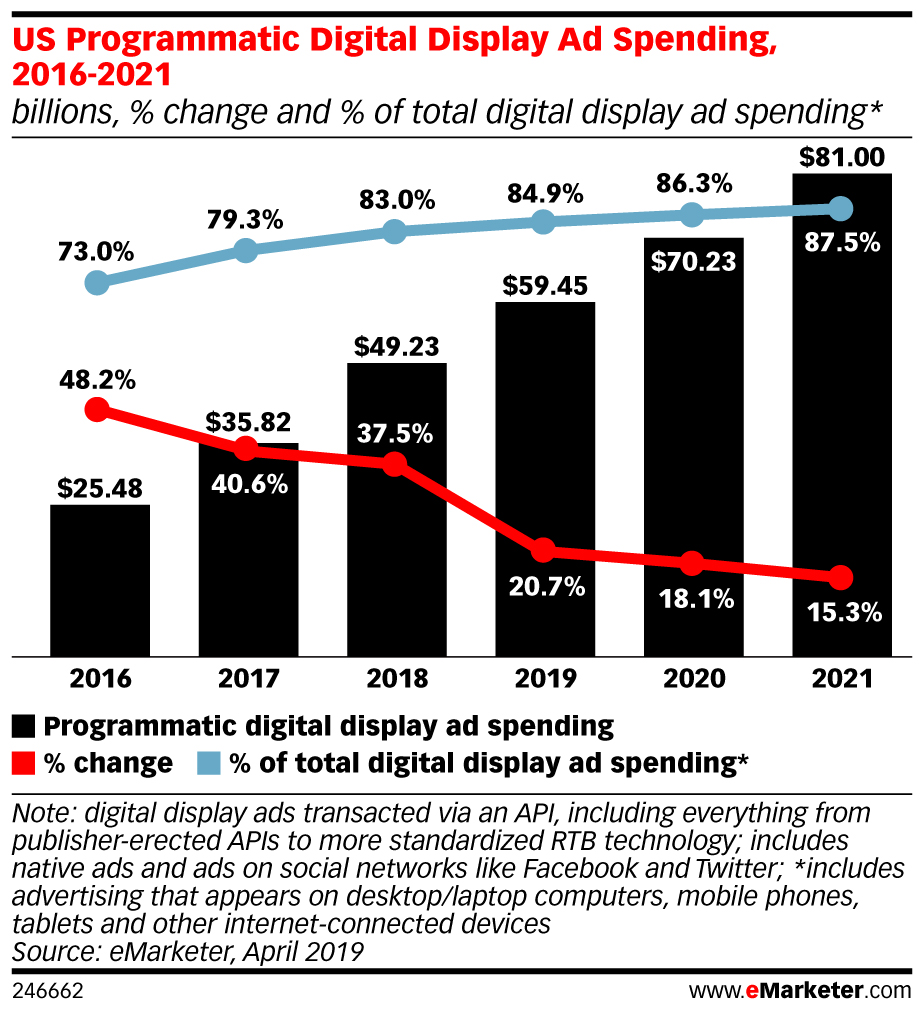
Mobile-specific programmatic buying also continues to rise year-over-year with a projected $54.74 billion spend by 2021, which will account for 53.7% of programmatic buying.
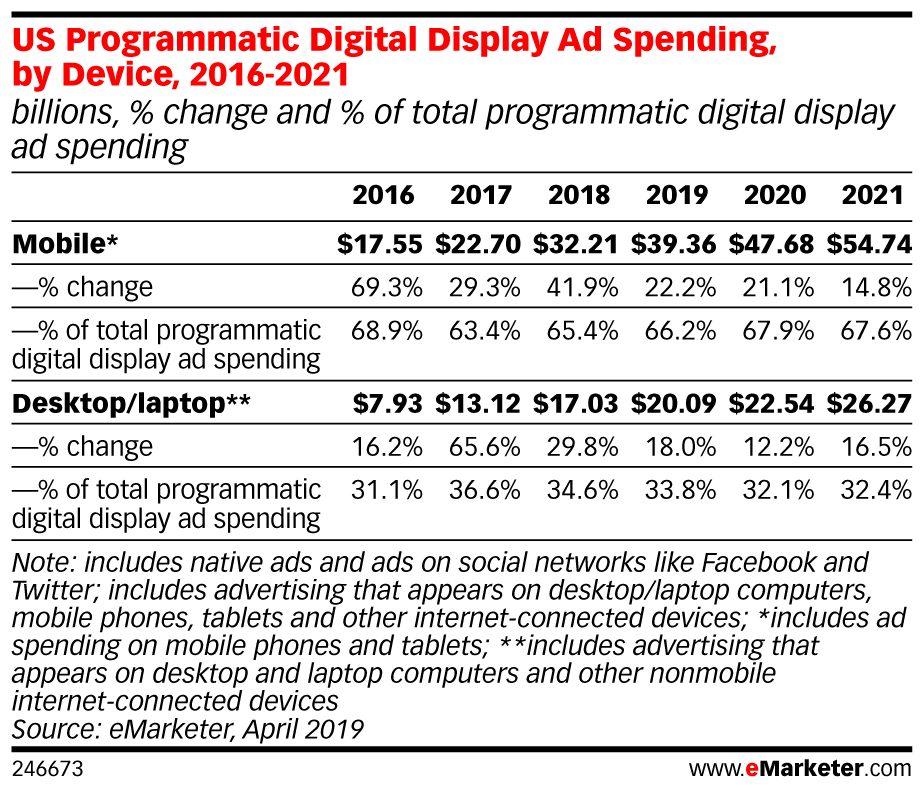
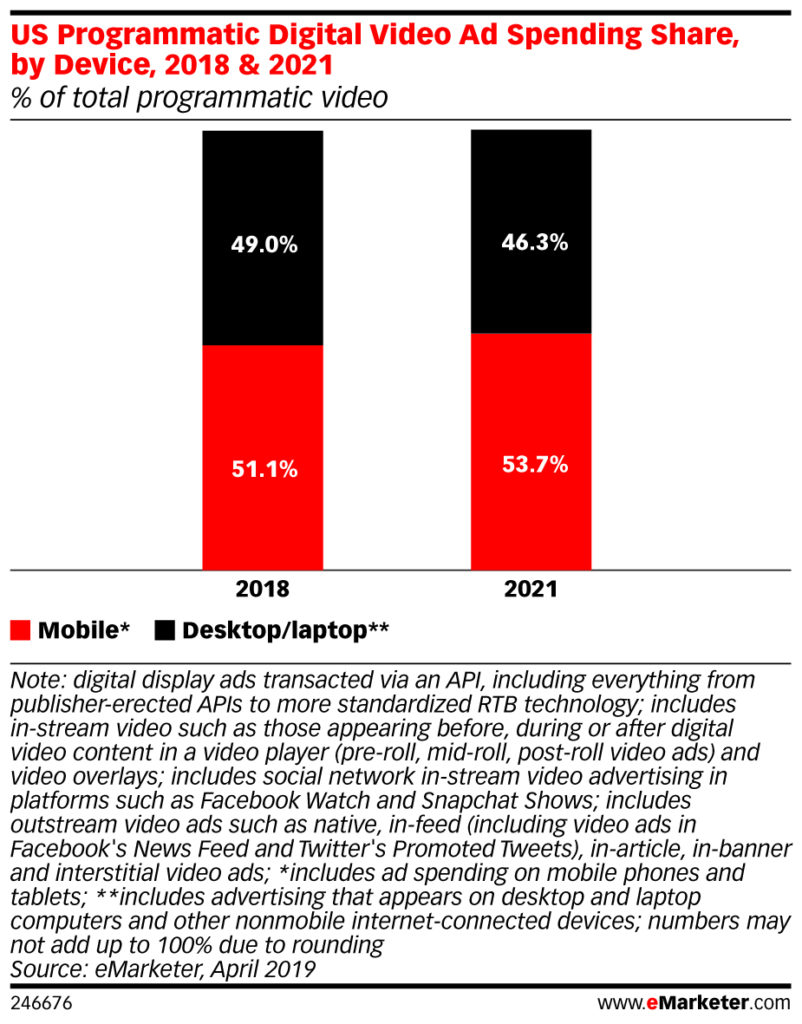
Programmatic video is also on the rise. By 2021, video will come in just under the 50% mark of total programmatic ad spending, driven in part by growth in social video, connected TV and OTT activity. (Source: eMarketer)
In conclusion, programmatic display is an automated, technology-driven form of digital media buying that allows you to reach your desired audience in real time across 99% of the World Wide Web. With efficiencies like lower rates, more fine-tuned targeting, access to large amounts of audience data and a variety of available placements and units, we at &Barr are strong believers in running media programmatically. And with projections rising year-over-year, its momentum in the industry doesn’t seem to be stopping anytime soon.
To get a more in-depth look at programmatic media buying, this article from eMarketer is a great source.





